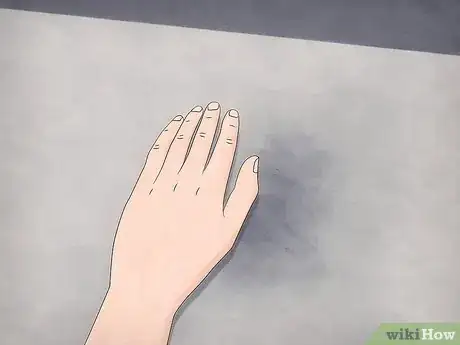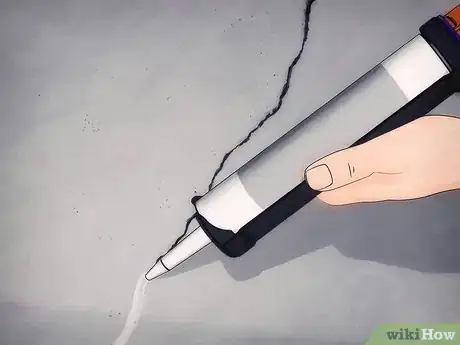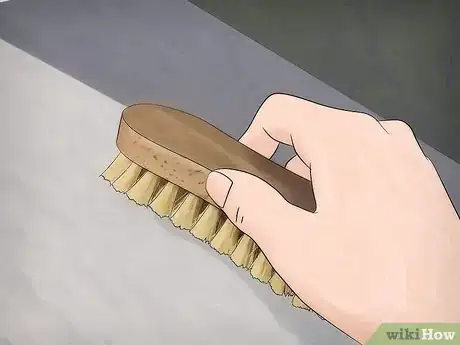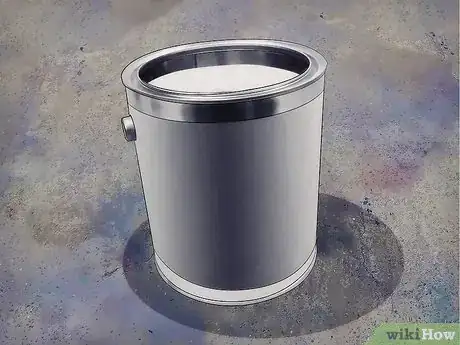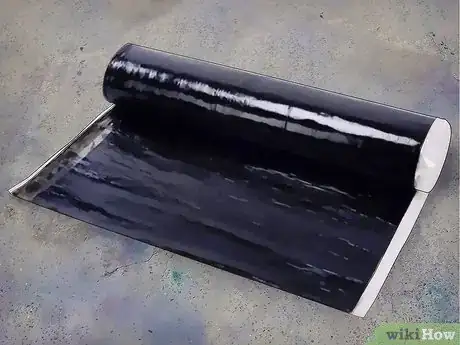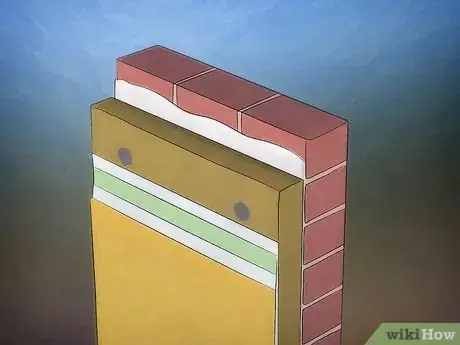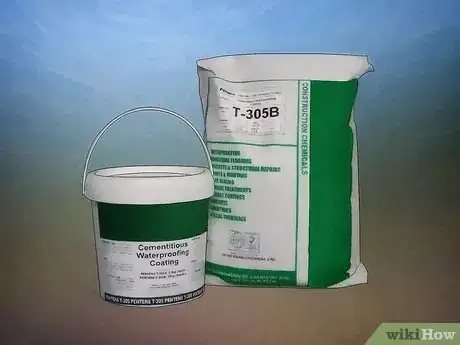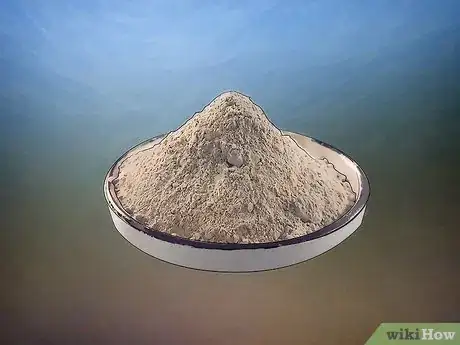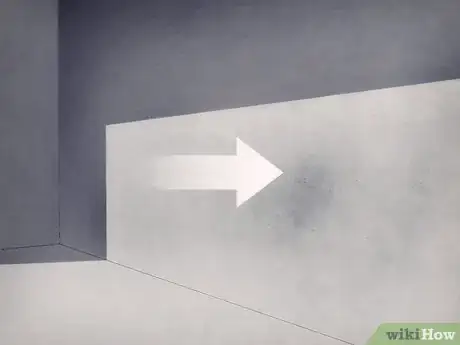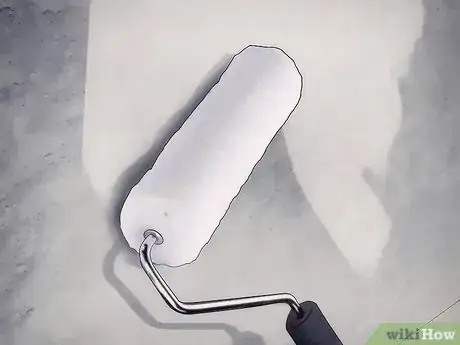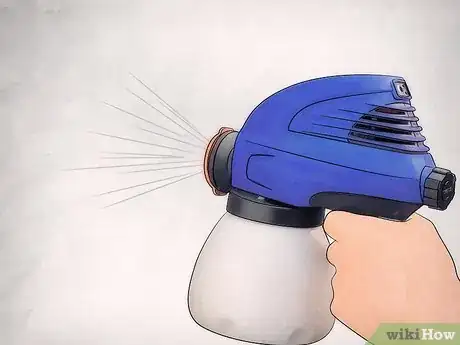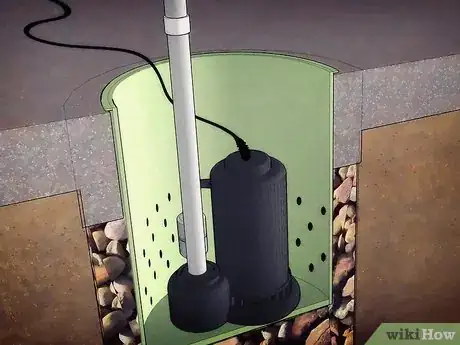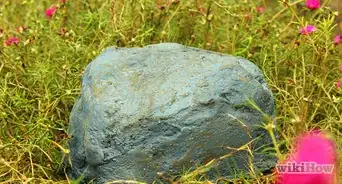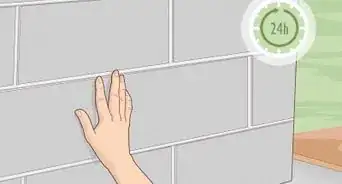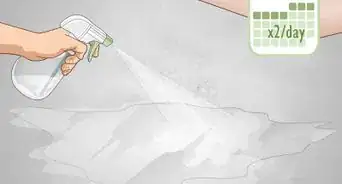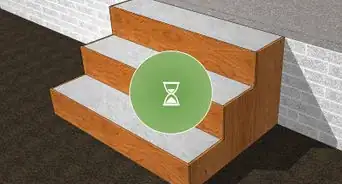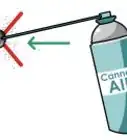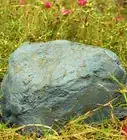wikiHow is a “wiki,” similar to Wikipedia, which means that many of our articles are co-written by multiple authors. To create this article, 14 people, some anonymous, worked to edit and improve it over time.
This article has been viewed 208,015 times.
Learn more...
If you're building a concrete foundation, or larger parts of your home involve concrete, you may want to consider waterproofing the concrete itself so that your rooms remain nice and cozy. That being said, a true concrete house is probably more waterproof than any other common type of structure to begin with, and only cracks, joints, or window and door openings should require attention. This article provides more information on how to get started with waterproofing, and which waterproofing techniques you might consider.
Steps
Prepping Your Concrete
-
1Determine if your concrete house needs waterproofing. Core-formed concrete, precast concrete panels, and ICF, or Insulated Concrete Form wall construction is essentially more waterproof than most other construction methods to begin with, meaning that it rarely needs additional waterproofing attention. That being said, the exterior walls of pre-fabbed concrete are often coated more for appearance than for weatherproofing.
- If you think your structure may need waterproofing, get a general contractor you trust to give you advice. He or she may suggest applying a liquid membrane and not much else, or suggest filling up any cracks or joints, instead of staging an elaborate waterproofing production.
-
2Prepare the walls for the coating you have selected. If you do decide to go ahead with waterproofing, nearly any technique you use will require your concrete walls to be in good standing. This means:
- Caulking — to fill any expansion joints or larger cracks up to 1⁄4 inch (0.6 cm), with a good quality polyurethane caulking.
- Concrete patching — to fill any joints larger than 1⁄4 inch (0.6 cm), making sure the concrete patch is completely dried before proceeding.[1]
- Grinding — to smooth out any rough, uneven concrete so that your waterproofing membrane or slurry has an even surface to adhere to.
Advertisement -
3Thoroughly clean the surface of your concrete before waterproofing.[2] With a stiff brush, some TSP (trisodium phosphate) and some water, wash away any loose material, oil, or dirt still clinging to the concrete. Most membranes like a clean surface to adhere to. Let dry before proceeding.
Choosing Your Waterproofing
-
1Use a liquid membrane for quickness and economy. Liquid membranes are usually polymer-based coatings that can be sprayed, troweled, or rolled onto concrete directly. They have the advantage of being quick to apply and are relatively low in cost.[3] Follow manufacturer's instructions on how to apply.
- The disadvantage of liquid membranes is that they don't offer even coverage. Even if you shoot for 60 mm of coverage, the minimum recommended thickness, it's hard to achieve that consistently.
-
2Use a self-adhering sheet membrane for consistency. Self-adhering sheet membranes are large, rubberized asphalt membranes that you peel and place directly onto the concrete. Sheet membranes boast even thickness, but are more expensive (in both parts and labor) than liquid membranes, and can take some time getting used to.[4]
- Self-adhering sheet membranes are extremely sticky. You need to be very diligent about peeling the membrane to expose the sticky side, because it will stick to anything it comes in contact with, and it's virtually impossible to un-stick it once it is laid.
- Be sure to pay special attention to how sheet membranes overlap, as improper installation can result in the possibility for leakage. Make sure that lap joints are properly cut and that a bead of mastic is run down every lap joint that's spaced within one foot of a corner.[5]
- Sheet membranes need at least two people to install. Installing them by yourself is a sure recipe for a poor job and create a lot of needless frustration for yourself.
-
3Try out EIFS, or exterior insulated finish systems. EIFS offers a durable, attractive, and fairly simple coating to the outside of concrete walls, doubling as insulation and waterproofing.[6] For a stucco-like finish, an EIFS finish coat can be applied directly to the concrete, filling any voids, floating out minor irregularities, and creating a good moisture resistant surface.
- EIFS are applied with a trowel, and comes in 5 gallon (18.9 L) buckets premixed and tinted to your preferred color. Float it off with a Styrofoam block or rubber float to create a uniform surface and texture. Other EIFS products may be sprayed, brushed, or rolled on with a paint roller.
-
4Try using cementitious waterproofing. Cementitious waterproofing, aside from having a moniker that takes a mouthful, are easy to mix and easy to apply. Buy them from your local masonry supply store. Mix them with an acrylic additive for a better bond, and then apply with a long-handled brush for ease. The one downside to cementitious waterproofing is that it doesn't have any elasticity, making it prone to cracking over longer periods of time.[7]
-
5Opt for sodium bentonite if you want to use a non-polluting, "green" method of waterproofing. Sodium bentonite is used in a lot of city dumps to prevent liquids from leeching into the underlying soil. It is essentially clay, and will act as a good waterproofing agent if you're concerned about leaving a human footprint. Bentonite also has the advantage of being able to cover smooth as well as coarser surfaces.
Finishing Up and Other Considerations
-
1Know which walls to apply waterproofing to. Deciding which walls to waterproof and which ones to forgo can save you time, money, and headache. Here's a water-clad rule for which walls to waterproof: Waterproof any walls with soil on one side and habitable space (including crawl space) on the other. Here are some other tips to consider:
- If the site or the area is especially wet (think Seattle, or the jungle), you may want to waterproof all walls.
- Extend the waterproofing at least 1 foot (0.3 m) from any wall or surface that does need waterproofing to any that doesn't. You want a little bit of a buffer, just to be sure.
-
2Apply the finish system you have selected to the wall according to the manufacturer's directions. Depending on the method of waterproofing you use, the manufacturer will have different suggestions and best practices. Consult the instructions of whatever product you are using, or consult a GC, for best results.
-
3Apply a suitable roof sealer to your roof if you have a cast in place concrete roof. This is an unusual situation, but there are homes with cast in place concrete roof systems, and typically, roofing cement and fiber reinforced roll roofing is applied to the roof to prevent water intrusion.
- If the house doesn't have sufficient slope to allow water to drain off the roof in a rain event, you may have to apply tar or a synthetic waterproofing membrane directly to the concrete, or use a seamless rubber roofing system. These products are more suitable for professional contractors to use.
-
4Remember to allow for proper drainage in addition to waterproofing measures. Waterproofing won't do much if the water that jets off the walls doesn't have a good place to drain to. Consult with an expert about building a perimeter footing drain, an under drain pipe system, or even a sump pump for heavy-duty water relocation. If it's a concrete basement you're trying to drain, consult this article.
Community Q&A
-
QuestionWhat would be the best metal to use for a door?
 Community AnswerUse aluminum or PVC, not steel. In my opinion, however, wood is a better choice if possible, it's cheap and easy to replace.
Community AnswerUse aluminum or PVC, not steel. In my opinion, however, wood is a better choice if possible, it's cheap and easy to replace.
Warnings
- Use appropriate safety equipment, such as safety glasses and respirators.⧼thumbs_response⧽
- Read and follow manufacturer's instructions carefully. These products may have volatile chemicals, fumes, and other dangerous byproducts during application.⧼thumbs_response⧽
Things You'll Need
- Tools for cleaning the surface to be treated, possibly including a grinder with a masonry grinding wheel, a pressure washer, brush, and water.
- For applying waterproofing, a trowel, rubber float, paint brushes or roller.
- Caulking gun and caulk for filling larger cracks.
References
- ↑ https://www.bobvila.com/articles/tips-for-waterproofing-basement-walls/
- ↑ https://www.concretenetwork.com/concrete/maintaining/sealingplain.htm
- ↑ https://www.bca.gov.sg/Publications/EnhancementSeries/others/design2Ch12.pdf
- ↑ https://www.bca.gov.sg/Publications/EnhancementSeries/others/design2Ch12.pdf
- ↑ http://www.concretenetwork.com/concrete/waterproofing_concrete_foundations/sheet_membranes.htm
- ↑ https://www.eima.com/eifs/benefits
- ↑ https://www.concretenetwork.com/concrete/waterproofing_concrete_foundations/cementitious_waterproofing.htm
About This Article
Once you’ve decided what walls to waterproof, fill in any small cracks with polyurethane caulking, or larger cracks with concrete. Then, smooth the walls by grinding any rough, uneven areas, so your coating goes on easily. Once the walls are ready, choose a coating that’s right for you, and apply it according to the instructions. For instance, if you prefer a coating that’s cheaper and quicker to apply, opt for a liquid membrane. For tips on how to apply different kinds of waterproof coating, such as exterior insulated finish systems, read on!
